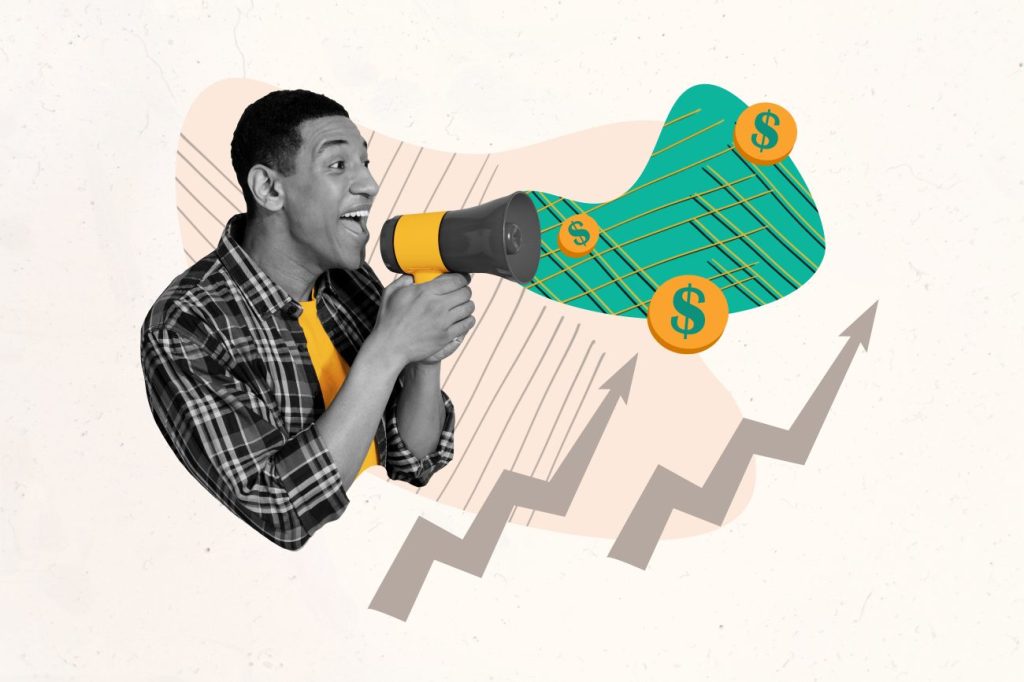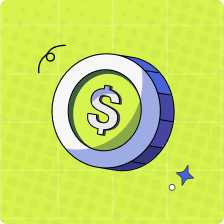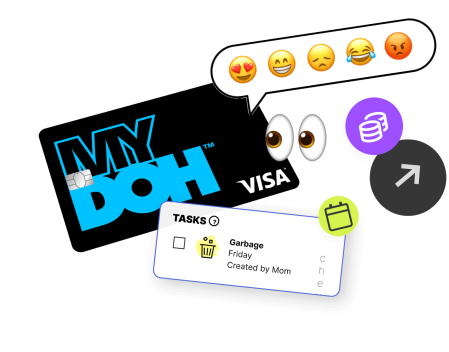Raising teens and kids in a fast-paced world means keeping up with the latest trends, technology, and (financial) terms. Teens pick up trendy terms from pop culture, social media, and influencers. And as a parent you it can be hard to decipher their conversation!
While parents know the difference between a TFSA and an RRSP, there are new financial buzzwords that have become mainstream. Learning these catchy words can help you and your kids have meaningful money conversations.
To catch you up to speed, here are 15 terms that you (and your kids) may not know.
Bands
“Bands” or “Bandz” refers to bundling $1,000 with rubber bands to transport cash. This slang word was popularized in hip-hop culture. So, your teen might say to you, “That new cellphone cost me a band!” Or your teen might use “bandz” to refer to money. “Yeah, I got bandz.”

Boujie
Boujie (bougie or boujee) comes from the word “bourgeoisie,” and is a way to describe someone who has expensive tastes or can be perceived as pretentious. For example, Gen Z might describe a trendy restaurant as being boujie. There’s also boujie broke, an individual who lives a lavish lifestyle (and may be trying to impress their peers), yet they worry about their limited finances.
Cash stuffing
You’ve likely heard of the envelope method (or used it yourself back in the day), but Gen Z knows this as cash stuffing. This resurgence on TikTok is a budgeting method that involves divvying up your cash and “stuffing” it into envelopes or creating a colourful binder labelled with different spending categories. Your kid may allocate $15 to a “movie tickets” envelope and $30 to a “clothing” envelope.
Cozzie livs
“Cozzie livs” is British slang for the “cost of living.” This term emerged in the UK as a lighthearted way to share financial challenges and has spread to other countries. It’s a way for teens to talk about money and relate to each other without having to go into detail. For example, your teen may decline to go out to a social gathering with friends because of “cozzie livs”.
Doom spending
Whenever you make an impulsive purchase caused by stress or anxiety, this is known as doom spending. With economic and political uncertainty, teens may resort to retail therapy to cope with their emotions. A teen might say, “I was feeling stressed out, so I went doom spending and bought a bunch of beauty products.” Gen Zers are also more likely to doom spend than other generations.
Read more: How to help your kids and teens avoid impulse buying.
Deinfluencing
Deinfluencing is a social media trend that popped up on TikTok. Instead of promoting specific products to buy, influencers dissuade their followers from making purchases. They highlight issues such as overpriced items, harmful ingredients, or questionable ethical practices. This encourages consumers to make mindful spending decisions. So, your teen might say, “I’m not going to buy this new water bottle because of the deinfluencing videos I’ve seen on TikTok.”
F.I.R.E.
The F.I.R.E. movement stands for “Financial Independence, Retire Early.” Variations include Coast FIRE, where individuals save enough for retirement to allow their investments to grow, so they no longer need to contribute to their nest egg. Barista FIRE is where people are semi-retired but take on part-time work for various benefits. Some Gen Z are motivated to increase their savings and reduce expenses to pursue their passions outside their 9-to-5 job.
Girl math
Gen Zs use “girl math” as a lighthearted way of justifying big and small purchases. The term was used on a radio show in New Zealand in July 2023. Their TikTok video went viral, and other TikTokers soon shared examples of using “girl math.” For example, if you purchased a smoothie for $5, it’s practically free. Or you splurge on a pair of jeans for $80, but you wear it 80 times, then it costs you a dollar each time.
Tip: Use the Should I Buy It quiz to calculate your cost-per-use.

Loud budgeting
Loud budgeting allows people to have open and honest discussions about budgeting and money-saving techniques. This term emerged from comedian Lukas Battle, who posted about loud budgeting on TikTok in January 2024. Since then, it’s become a popular social media trend for Gen Z. For instance, your teen may tell their peers that they don’t need to drain their bank account on pricey fashion trends.
Money dysmorphia
Younger generations face money dysmorphia, which is the disconnect between their perceived financial situation and their financial reality. This can be exacerbated by what Gen Z sees on social media. When teens compare themselves to their friends who appear to be better off financially, it could make them believe they aren’t doing as well.
While your teens may not be throwing around the term “money dysmorphia,” they may be feeling it. You can help them overcome their feelings by reminding them money is a tool not a measure of worth, or encourage them to set financial goals, such as buying concert tickets to help reduce uncertainty about their finances.
Pump and dump
Pump and dump is a classic investment scam that originated in the early days of the stock market. It’s where fraudsters falsely pump up a stock’s price to attract buyers. Then insiders “dump” their shares, resulting in the stock price crashing and shareholders losing money. Older Gen Zs with a trading app may get enticed into buying stock (or meme coin) from social media, celebrities, online ads, and chat rooms without first questioning whether it’s a pump-and-dump scheme.

Shrinkflation
Have you noticed that the same juice carton looks smaller—but the price has stayed the same or increased? This tactic is known as shrinkflation. Pippa Malmgren, a British economist, invented this term in 2009. It’s widely used in the grocery and retail industries. The next time you’re at the grocery store, encourage your kids and teens to compare pricing using per-unit pricing to ensure they’re getting the best value for money.
Underconsumption-core
Underconsumption core is a social media trend that youth started embracing last year. Gen Z has adopted a mindset of making intentional purchases in response to fast fashion and consumerism. A teen might start buying clothes at a thrift store instead of new clothes. As parents, you’ve probably found ways to extend the lifespan of your favourite leggings. This trend helps to promote sustainability and financial responsibility in the household.
Vibecession
Has your kid told you that it’s tough to find a job, that meals are pricier, or they’re curbing their spending, yet the economy is doing alright? This is known as a “vibecession”. Kyla Scanlon, an economist, created this term to illustrate the contrast between economic data and consumers’ sentiment. Teens may use this word to describe their feelings of financial instability or anxiety.
Zombie debt
Zombie debt refers to old debt that’s been revived by collection agencies. It’s beyond the legal collection timeframe, but agencies may attempt to get people to repay the debt. Hence, it’s like bringing debt back from the dead. You can talk to your teens about consumer rights. So when they become adults, they know their rights and responsibilities.

Learning financial buzzwords
Understanding these financial terms isn’t solely about keeping up with your teen’s vocabulary. It’s about feeling empowered to have engaging conversations to raise money-smart kids in your household.
As parents, you can learn these terms to guide your teen and support them in making informed financial decisions. Doing so will give them the confidence they need as they transition into adulthood and take on more financial responsibility.
Download Mydoh and help build the foundation of financial literacy for your kids and teenagers.
This article offers general information only and is not intended as legal, financial or other professional advice. A professional advisor should be consulted regarding your specific situation. While the information presented is believed to be factual and current, its accuracy is not guaranteed and it should not be regarded as a complete analysis of the subjects discussed. All expressions of opinion reflect the judgment of the author(s) as of the date of publication and are subject to change. No endorsement of any third parties or their advice, opinions, information, products or services is expressly given or implied by Royal Bank of Canada or its affiliates.


















